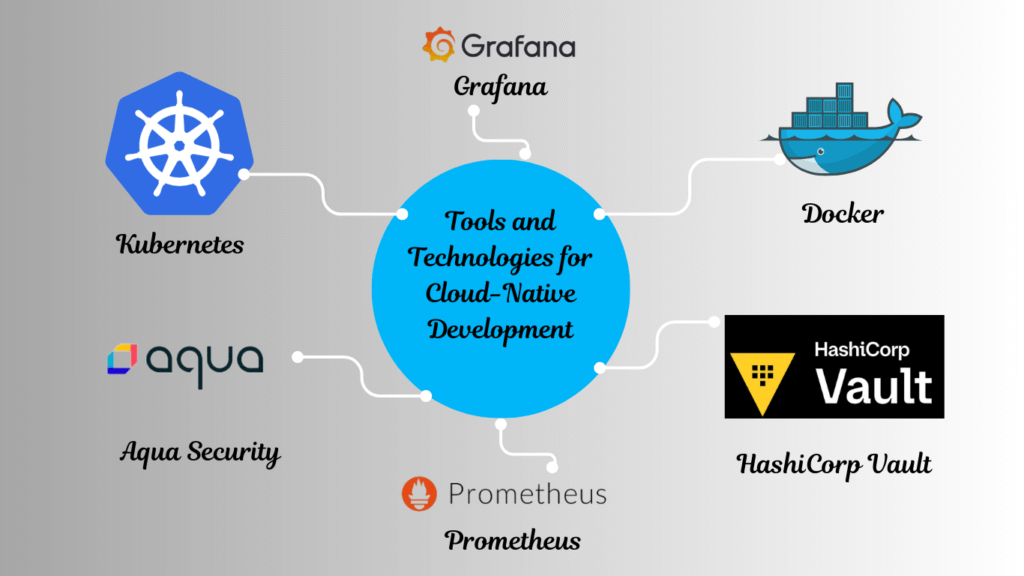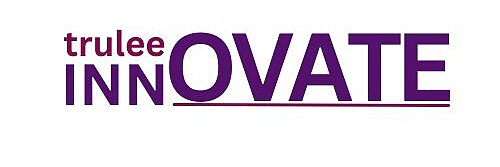Introduction to Cloud-Native Applications
A revolutionary method of developing and implementing software is represented by cloud-native applications. Cloud-native apps use the power of cloud computing to provide scalability, agility, and resilience, in contrast to traditional monolithic apps.
These applications are designed to thrive in cloud environments, utilizing modern technologies like containers, microservices, and continuous delivery pipelines. With businesses increasingly shifting to digital platforms, the need for secure and efficient cloud-native applications has never been more critical. Security ensures data protection and compliance, while efficiency guarantees optimal performance and cost-effectiveness. This blog explores how to achieve both in cloud-native application development.
Core Principles of Cloud-Native Application Development
Building a cloud-native application involves adhering to a set of core principles:
- Microservices Architecture: Breaking down the application into smaller, independent services allows teams to develop, deploy, and scale specific functionalities without affecting the entire system.
- Benefits: Reduced downtime, easier debugging, and faster deployments.
- Example: E-commerce platforms often have separate microservices for payments, inventory, and user authentication.
- Containerization: Containers package applications and their dependencies, ensuring consistency across development, testing, and production environments.
- Tools: Docker and Podman are popular containerization platforms.
- Importance: Containers reduce the “it works on my machine” problem by standardizing environments.
- Scalability and Flexibility: Cloud-native applications must adapt to varying workloads by scaling resources up or down.
- Horizontal scaling (adding more instances) and vertical scaling (adding more power to existing instances) are common strategies.
- Example: Streaming platforms like Netflix scale their resources during peak hours.
By embracing these principles, developers can build robust foundations for cloud-native applications.
Security Challenges in Cloud-Native Environments
While cloud-native architectures offer significant advantages, they also introduce unique security challenges:
- Expanded Attack Surface: With multiple microservices and APIs, there are more potential entry points for attackers.
- Solution: Employ API gateways and secure API communication with authentication and encryption.
- Dynamic Infrastructure: Containers and orchestration tools like Kubernetes constantly spin up and terminate resources, making it harder to maintain consistent security policies.
- Solution: Use tools like Kubernetes Network Policies and service meshes such as Istio.
- Third-Party Dependencies: Many cloud-native applications rely on open-source libraries and third-party tools, which may introduce vulnerabilities.
- Solution: Regularly scan dependencies for vulnerabilities using tools like Snyk or Dependency-Check.
Understanding these challenges is the first step toward mitigating risks and safeguarding applications.
Steps to Build a Secure Cloud-Native Application
- Secure Code Development:
- To reduce vulnerabilities, teach developers secure coding techniques.
- Use tools like SonarQube to identify insecure code patterns.
2. Regular Vulnerability Scanning:
- Scan containers and application code for known vulnerabilities using tools like Trivy or Aqua Security.
3. Encryption and Data Protection:
- Encrypt data both in transit and at rest using TLS and AES-256 encryption.
- Employ secrets management tools like HashiCorp Vault.
4. Identity and Access Management (IAM):
- Implement robust IAM policies to ensure only authorized users and services can access sensitive resources.
5. Network Security:
Use network segmentation to isolate critical services.
- Employ firewalls and security groups to restrict unauthorized traffic.
- By incorporating these steps, developers can build a solid security foundation for their cloud-native applications.
Techniques for Building an Efficient Cloud-Native Application
Resource Optimization:
- Use autoscaling to adjust resources based on real-time demands.
- Optimize container sizes to avoid over-provisioning.
Monitoring and Logging:
- Implement centralized logging solutions like ELK Stack or Fluentd.
- Use technologies such as Grafana and Prometheus to keep an eye on performance measurements.
Continuous Integration/Continuous Delivery (CI/CD):
- Automate builds, testing, and deployments to ensure faster delivery cycles.
- Tools: Jenkins, GitLab CI/CD, and CircleCI.
Load Balancing:
- Use load balancers to distribute traffic evenly across instances, ensuring high availability.
Efficiency is achieved by streamlining processes, optimizing resource usage, and proactively addressing performance bottlenecks.
Best Practices for Ensuring Security and Efficiency
Shift-Left Security:
- To find problems before they are deployed, incorporate security early in the development process.
- Tools: Application security testing tools include Dynamic Application Security Testing (DAST) and Static Application Security Testing (SAST).
Regular audits and Penetration Testing:
- Conduct periodic security audits to uncover vulnerabilities.
- Simulate attacks to evaluate the application’s defense mechanisms.
Infrastructure as Code (IaC):
- Use code to specify and oversee infrastructure to ensure consistency and repeatability.
- Tools: Terraform and AWS CloudFormation.
Collaboration Between Teams:
- Foster collaboration between development, operations, and security teams for a cohesive approach.
By implementing these practices, teams can strike a balance between security and efficiency without compromising either aspect.
Tools and Technologies for Cloud-Native Development
1.Kubernetes: Containerized applications are orchestrated by Kubernetes, which guarantees scalability and resiliency.
2.Docker: Simplifies containerization of applications.
3.Prometheus and Grafana: Make it possible to track and visualize the performance of applications.
4.Aqua Security: Provides container security solutions.
5.HashiCorp Vault: Manages secrets and encryption keys securely.
These tools empower developers to build, manage, and secure cloud-native applications effectively.

Case Studies: Real-World Examples of Secure and Efficient Cloud-Native Applications
- Spotify: Leveraged microservices and Kubernetes to deliver seamless music streaming experiences.
- Airbnb: Ensured scalability and security through containerization and robust IAM policies.
- Netflix: Pioneered chaos engineering to enhance application resilience and efficiency.
These examples demonstrate the practical benefits of secure and efficient cloud-native applications in action.
Future of Cloud-Native Applications
Emerging Technologies: Serverless computing and edge computing are set to redefine cloud-native development.
- Focus on Zero Trust Security: Adopting “never trust, always verify” principles.
- AI-Driven Optimization: Using artificial intelligence to enhance efficiency and predictive maintenance.
As technology evolves, staying updated on trends is crucial for developers aiming to build future-ready cloud-native applications.
Conclusion: Building a Future-Ready Cloud-Native Application
Secure and efficient cloud-native applications are no longer optional in today’s competitive digital landscape. By adhering to best practices, leveraging modern tools, and fostering collaboration, businesses can unlock the full potential of cloud-native solutions. Developers must prioritize security and efficiency from the ground up, ensuring applications are not only resilient but also scalable and cost-effective.


